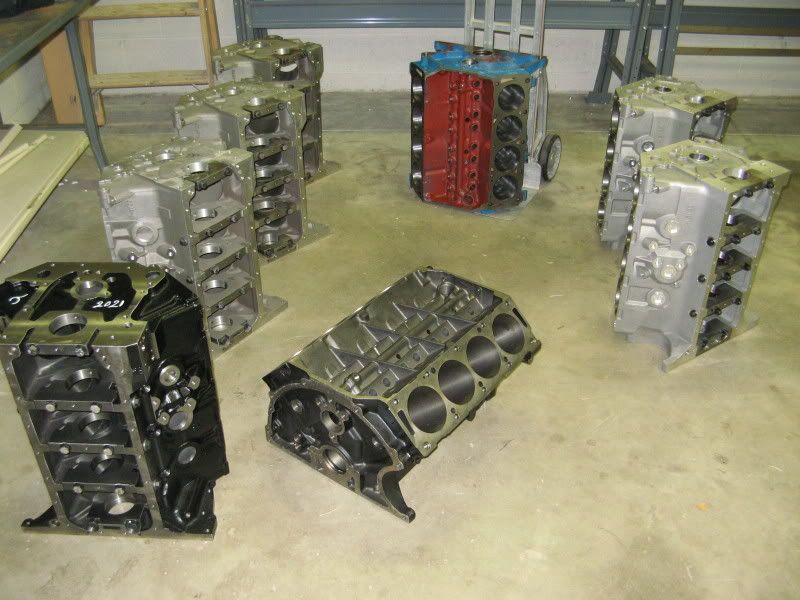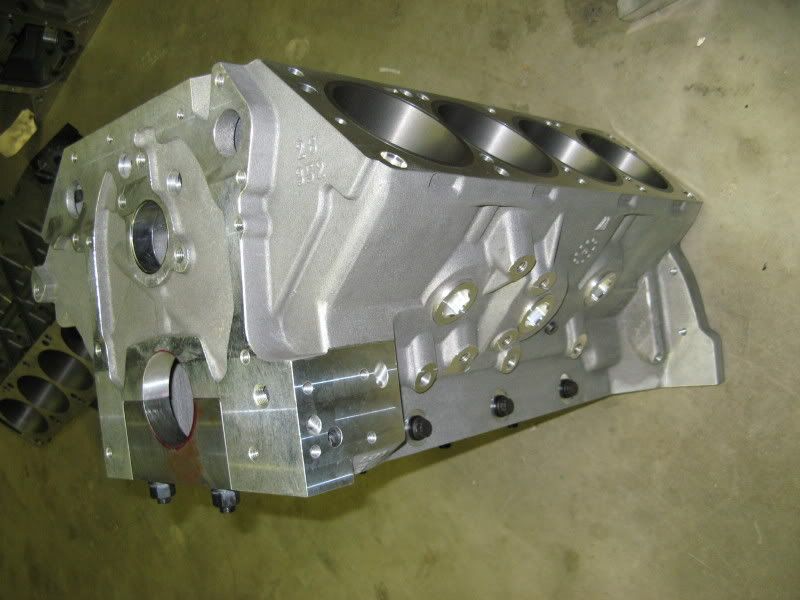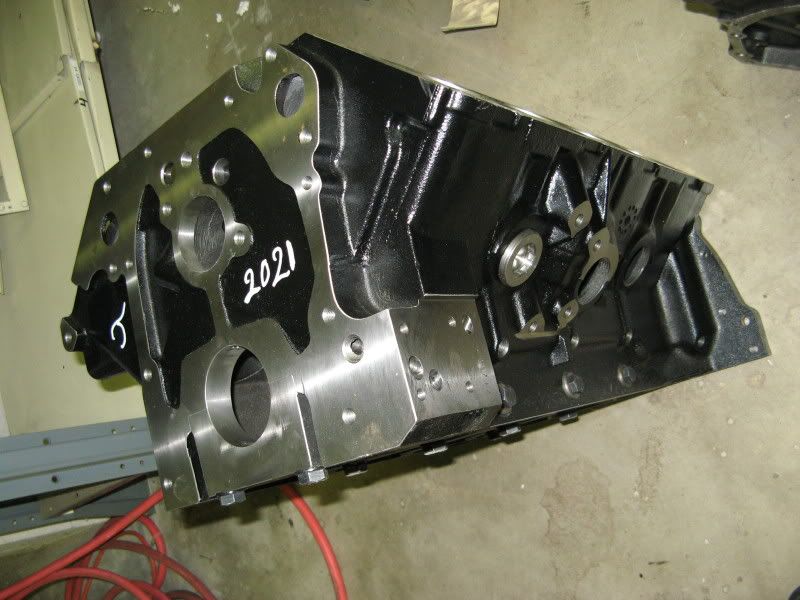Both guys make good parts - let's get that out of the way. Now - I have never built a Pond iron block, but they are very similar to the aluminum version, so the basic observations apply. I have assembled many of each in aluminum and a bunch of Genesis in iron.
The Genesis looks much more original in outside cosmetics - essentially identical including OE style freeze plugs. If that matters to you - the choice is made. They both have 1965 dates on them, but the Pond has very different external contours and has o-ring sealed CNC formed freeze plugs.
The Pond will also require unique head studs - at least on their aluminum blocks. Not sure if that applies to iron but suspect that it does. The studs are a nice item in aluminum with an extended thread depth - but they are certainly not needed with iron. The stud kit is a special item and it does add an extra hundred or so to the cost compared to "normal" studs. FWIW - I have never pulled the threads on any studded head or main fastener, although I have on bolts.
The Pond has billet caps and a dowel pin alongside the main bolt - a feature I really like. The Pond also has a solid contact along the full side of each main cap instead of the extended cross bolt "leg" on the Genesis. This intuitively seems better and looks nicer. But the LS1 Chevy guys started out with a similar design and ran into windage &
oil control issues from inadequate "bank to bank" crankcase breathing and ended up drilling vent holes. Could be a case where the better design is not really better. No data beyond comparison to support this observation.
I have exactly one broken ductile main cap out of many, many Genesis and OE 427 builds. And this one - in the shop now - was not a super high powered application. The break looks like the origination point starts at the root of the "pull hole". The telltale beach marks are nearly obliterated though - this motor ran for quite a while with the cracked cap. The block used in my first (and second) Engine Masters Challenge entry was a very early cast cap block, and is still decidedly intact after innumerable pulls at and over 750 horsepower and plenty of detonation. I suspect - again no data - that any cap issues are related to the tune up and car as much as anything. Steel caps are nice, but not mandatory at your power level.
The ribs in the lifter valley are needed in aluminum, but are useless in iron blocks. Unless you make some cross passages in the valley ribs and do a little detail work these blocks will "park" a great deal of
oil right above the lifters. Whether that is good or bad is in the eye of the beholder.
Both blocks require special cam bearings with common ODs to simplify machining. The Pond block's are wider, but I have never had issues with OE sized FE cam bearings. A solution looking for a problem. The Pond front bearing does require some "nibbling" to clear the distributor. Both blocks need the lifter galley end plug to be whittled down for distributor clearance - they don't go in deep enough.
The Genesis is closer to ready as delivered. The Pond is semi-finished. This is reflective of a different marketing philosophy on the part of the two suppliers. Robert Pond is a racer - and he delivers a block the way a racer would want it - with cam tunnel, main tunnel, and lifter bores undersized so that they can be finished to an exact desired specification. The Genesis is marketed by Tim as a service block, and is very close on machining as delivered - especially as the latest generation has shown improved quality and machining. In the last several I've had (two irons dropped off yesterday) the cam and lifters are spot on, the decks are very close. The mains are close, but the center is always a bit tight - they cut those from each end and it seems they drift in the middle just a hair.
Assume that the Genesis is going to be somewhat less expensive to machine and build. Older Genesis blocks required that the head
oil feed at the deck needed to be "dragged" over to match the gasket opening. Latest blocks have this already done. The chamfer on the thrust should be enlarged to clear my preferred F-M bearings. That's about it.
At the end of the day these are both very good parts - and it's great to have choices where none existed only a few years ago. While there are a few things to be aware of during prep and assembly - there are no "secrets" to building a stout 427 based on these blocks - at least not with me. I answer as many questions as time allows in this very public venue. The more of these that get built the better off we all are in terms of experience, knowledge gained and reduced costs from volume.
This is a technical venue - not the classifieds - so vendor competitive pricing discussion is not really appropriate here. But manufacturer pricing is fair game. Despite the high unit prices for blocks, there are really nominal single digit margin percentages for vendors - even less once you include credit card charges and inbound freight expenses. Every business handles those costs differently - I include them in the price for clarity - others add them afterward to promote lower prices. But it is safe to say that your actual final costs from any of the internet or forum providers is going to be pretty close on these.
This is a case where you simply cannot make a "bad choice" - both options are good ones and deliver good value. Choose and enjoy...block party photos below...
===========================================
To be clear, I did not write this. Barry R. did.
 Source
Source -- Barry R., Survival Motorsports
http://www.network54.com/Forum/74182...ck+-+cast+iron


